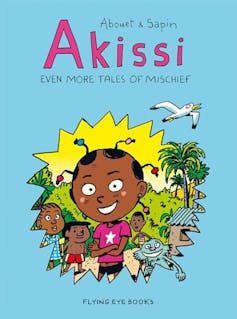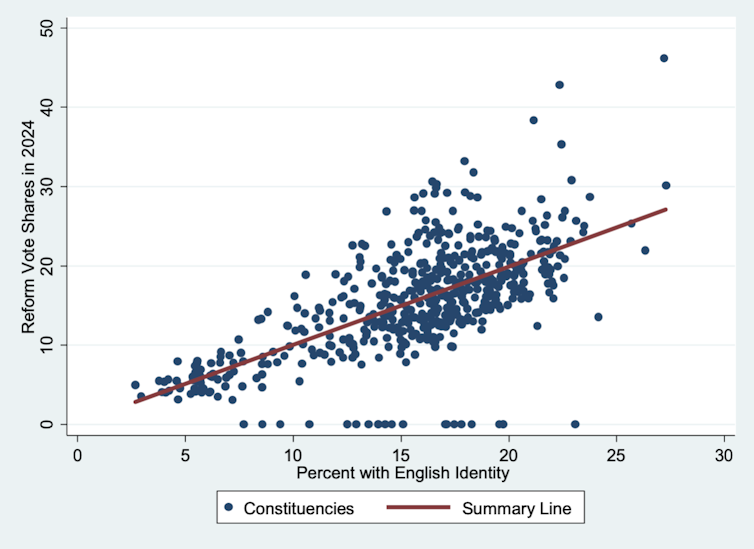Source: The Conversation – UK – By Laura Elin Pigott, Senior Lecturer in Neurosciences and Neurorehabilitation, Course Leader in the College of Health and Life Sciences, London South Bank University

Beauty standards have always evolved, but in today’s social media age, they shift at lightning speed. From “clean girl” minimalism to the “quiet luxury” aesthetic, each new ideal promises perfection few can reach – fuelling comparison and self-doubt.
It isn’t just social media trends that fuel these feelings of inadequacy. Our brain also plays a role.
Neuroscience shows us the brain is hardwired to respond to beauty. Seeing an attractive face activates the brain’s reward and social circuits – releasing the feel-good hormone dopamine. This hormone is also released when we happen to live up to a specific beauty standard, making this feel biologically gratifying.
Read more:
Social media rewires young minds – here’s how
But this wiring also makes us vulnerable. Over time, the brain adapts to these ideals, treating them as the new normal. Our brains’ natural ability to change (plasticity), once an evolutionary advantage, is now exploited by a digital world that continually reshapes how we see ourselves.
Understanding this science offers hope, however. If our perceptions can be trained, they can also be retrained – allowing us to reclaim control over what beauty means.
Beauty baseline
Although we’re born with some preference for symmetrical or aesthetic features — cues the brain associates with health and genetic fitness — our sense of beauty is highly plastic. Neuroscience shows that what we find attractive is shaped by what we repeatedly see and learn to value.
This adaptability comes from the brain’s reward and learning systems, particularly the two areas known as the nucleus accumbens and orbitofrontal cortex, which constantly update their “templates” for what counts as rewarding or desirable.
Over time, repeated exposure to certain beauty ideals – such as pore-less skin or “heroin chic” bodies – can shift our perception of what’s normal or attractive. Psychologists call this the mere exposure effect: the more we see something, the more likely we are to like it.
For instance, in one study, people were found to rate faces as being more attractive after seeing them multiple times. Their brain activity confirmed this adaptation. With repetition, areas involved in reward and facial recognition became more active – and the brain’s electrical signals for attention and emotion grew stronger.
In other words, the brain was literally learning to find those faces more rewarding. This process helps explain how society can so quickly adjust to new beauty standards.
This flexibility means our “beauty baseline” – the internal benchmark for attractiveness – can easily shift in unhealthy directions. When our social media feeds are filled with idealised, edited images, our reward systems start favouring those cues.
A neuroimaging study found that people exposed to digitally enhanced faces subsequently showed weaker reward responses to real ones – and they felt less satisfied with their own appearance. This shift in the brain’s valuation system means beauty becomes less about reality and more about repetition.
Social media amplifies this effect. Algorithms feed us more of what captures our attention, creating a feedback loop of homogeneous beauty. This can increase body dissatisfaction and appearance anxiety, especially among teenage girls. Frequent use of beauty filters were also associated with growing appearance concerns and a skewed sense of what’s real.
Internalising such narrow beauty ideals can have serious mental health consequences – such as body dissatisfaction, anxiety, depression and disordered eating. This dissatisfaction can escalate into chronic stress, low self-esteem or social withdrawal.
Repeated comparison to idealised images may contribute to clinical conditions such as body dysmorphic disorder and anorexia nervosa. Appearance pressures can also drive chronic dieting, steroid use or compulsive grooming.

SurfsUp/ Shutterstock
Perhaps most damaging is the shift from appearance being simply a part of our identity to now being strongly associated with our self-worth as a result of social media pressures. Constantly monitoring how you look has been strongly linked to anxiety and motivation for daily activities.
For many, the pressure to match unrealistic ideals becomes a daily mental health battle with a significant social toll, leading to social withdrawal and even affecting academic performance and professional confidence.
Building resilience
Understanding the neuroscience behind beauty perception can be empowering. By recognising how our brains respond to beauty and how they can be conditioned by our environment, we can take control to improve our self-image.
They key is that our brains are malleable. If repeated exposure to idealised images can train us to crave them, diverse and realistic images can re-train those same circuits in healthier directions. Curating our social media feeds to include different body types, ages and skin tones broadens what our brains recognise as beautiful, helping counteract the narrow ideals reinforced by algorithms.
It’s also important to recognise that seeing filtered images activates dopamine-rich reward centres. So it isn’t that these images are proof of superior beauty, but rather that they reinforce a neural reflex.
Building resilience also means shifting our reward focus. The same brain systems that respond to looks also light up for achievements, connection, creativity and kindness. Simple actions such as unfollowing toxic accounts, taking breaks from social media and practising positive self-talk have been shown to protect wellbeing and re-calibrate our reward systems.
Modern culture, driven by media and social platforms, has proven adept at manipulating our neural systems for profit and popularity. By exploiting our brains’ responsiveness to reward and social cues, these forces enforce narrow beauty ideals that can sink deeply into our psyche.
The science makes it clear: our brains respond to what they’re fed. Armed with this knowledge, we can become aware of the manipulation and choose to reclaim control over our own perceptions of beauty.
![]()
Laura Elin Pigott does not work for, consult, own shares in or receive funding from any company or organisation that would benefit from this article, and has disclosed no relevant affiliations beyond their academic appointment.
– ref. How your brain keeps falling for the latest beauty fads – and what you can do about it – https://theconversation.com/how-your-brain-keeps-falling-for-the-latest-beauty-fads-and-what-you-can-do-about-it-267274














